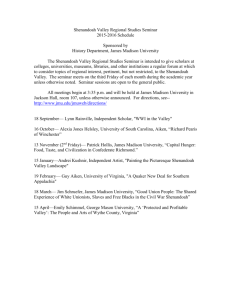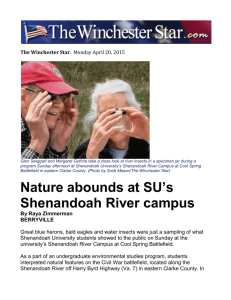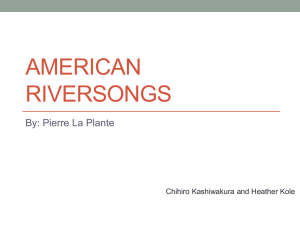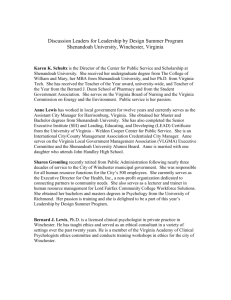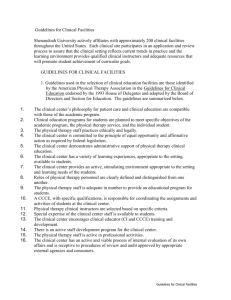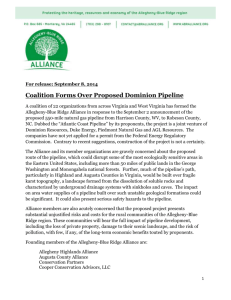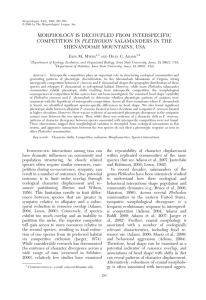Factors affecting the distribution of the endangered Shenandoah
advertisement
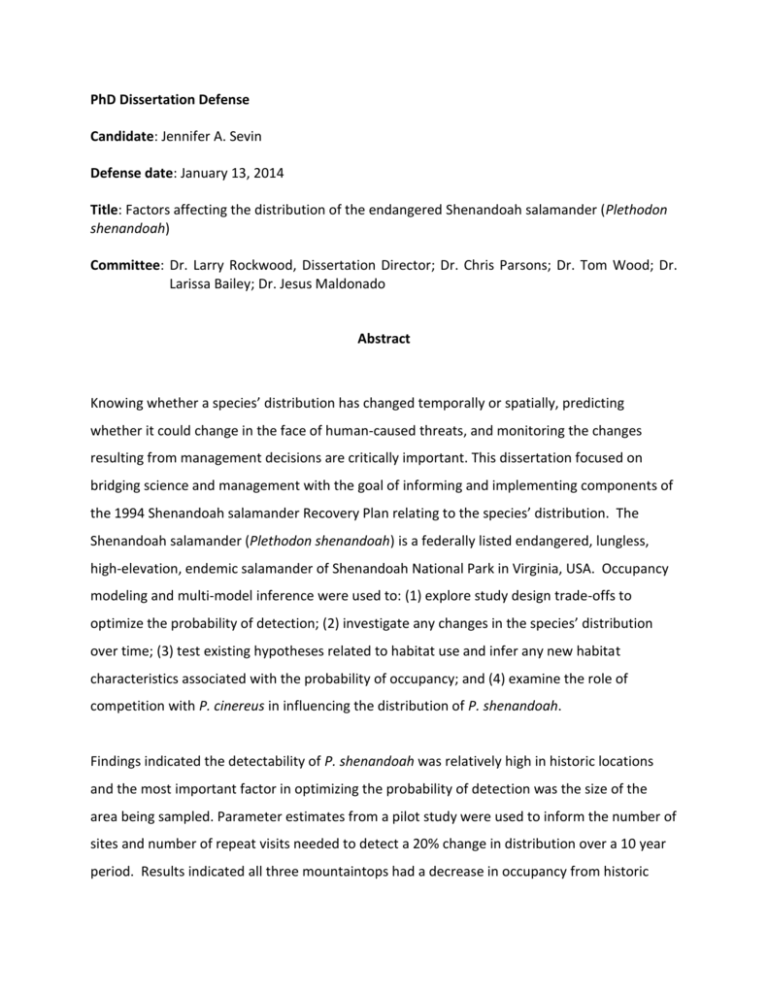
PhD Dissertation Defense Candidate: Jennifer A. Sevin Defense date: January 13, 2014 Title: Factors affecting the distribution of the endangered Shenandoah salamander (Plethodon shenandoah) Committee: Dr. Larry Rockwood, Dissertation Director; Dr. Chris Parsons; Dr. Tom Wood; Dr. Larissa Bailey; Dr. Jesus Maldonado Abstract Knowing whether a species’ distribution has changed temporally or spatially, predicting whether it could change in the face of human-caused threats, and monitoring the changes resulting from management decisions are critically important. This dissertation focused on bridging science and management with the goal of informing and implementing components of the 1994 Shenandoah salamander Recovery Plan relating to the species’ distribution. The Shenandoah salamander (Plethodon shenandoah) is a federally listed endangered, lungless, high-elevation, endemic salamander of Shenandoah National Park in Virginia, USA. Occupancy modeling and multi-model inference were used to: (1) explore study design trade-offs to optimize the probability of detection; (2) investigate any changes in the species’ distribution over time; (3) test existing hypotheses related to habitat use and infer any new habitat characteristics associated with the probability of occupancy; and (4) examine the role of competition with P. cinereus in influencing the distribution of P. shenandoah. Findings indicated the detectability of P. shenandoah was relatively high in historic locations and the most important factor in optimizing the probability of detection was the size of the area being sampled. Parameter estimates from a pilot study were used to inform the number of sites and number of repeat visits needed to detect a 20% change in distribution over a 10 year period. Results indicated all three mountaintops had a decrease in occupancy from historic records, but it is unknown if this is an artifact of the limitations in the historic data or truly a decrease in distribution. No new occupied patches or populations of P. shenandoah were observed, including in habitat designated by management agencies as suitable. Most of the existing hypotheses related to habitat were not supported. The historic habitat appears to be critical to the persistence of P. shenandoah and it was found to have optimal conditions, significantly different in a number of habitat characteristics compared to surrounding patches. Occupancy for P. shenandoah was highest in the Type II talus microhabitat, rather than in the more-soil rich environment. Defoliation of hemlock trees from invasive species did not result in a decreased probability of occupancy. In contrast to a long-held hypothesis, competition with P. cinereus was not found to influence the occupancy of P. shenandoah. Both species overlap in the much of the historic range. Neither species excluded the other in terms of occupancy, but they did interfere with each other in terms of detection, with P. shenandoah heavily affecting the use of cover objects by P. cinereus. Not only did this research address critical tasks of the Recovery Plan, but the results provided a new baseline from which to develop the long-monitoring plan. Parameter estimates from this research will enable agency personnel and researchers to implement adequate study designs in the future. Additionally, this dissertation highlights the direction where further research is needed, such as in understanding the unique nature of the historic habitat and the population connectivity and gene flow of P. shenandoah across the landscape.
